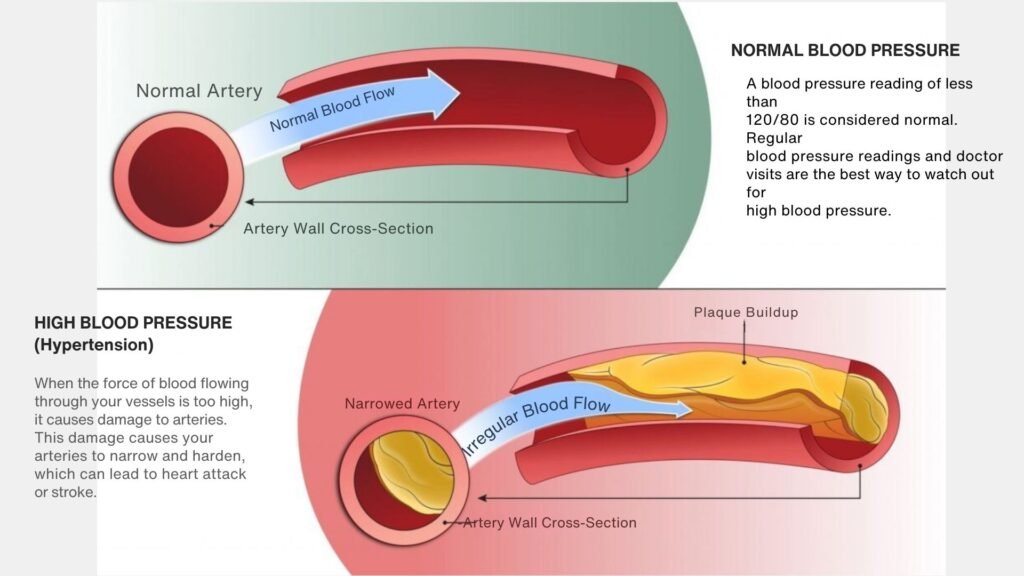Erectile dysfunction or mardana kamzori impacts millions of men globally which causes both emotional problems alongside broken relationships before triggering a decrease in one’s quality of life. Through contemporary medical frontline advancements Erectile Dysfunction Treatment now offers diverse approaches that deliver better outcomes than previous methods. Your path to enjoying better sexual health begins with understanding all aspects of ED including its symptoms along with their causes and the diagnosis process and treatment options.
This article presents detailed information about the underlying factors that trigger erectile dysfunction while examining diagnostic evaluation methods alongside treatment and management approaches to help restore your health. Our guide will lead you through the process from recognizing these symptoms all the way to your journey to better health.

Symptoms and Causes of Erectile Dysfunction (Mardana Kamzori)
You need to recognize the symptoms and roots of erectile dysfunction before you begin your treatment search. Erectile dysfunction produces multiple effects by causing erection problems and creating sadness in relationships along with emotional distress. A medical condition named erectile dysfunction results from different bodily or mental factors that block a man’s ability to get or keep an erection.
Symptoms of Erectile Dysfunction
The most common symptoms of ED include:
- Inability to achieve or sustain an erection: The failure to maintain or achieve erections represents the main visible sign of this condition.
- Reduced sexual desire: Erectile Dysfunction promotes diminished sexual desire among affected men.
- Premature or delayed ejaculation: When a person suffers from ED their ability to control ejaculation timing might suffer as a result.
- Emotional strain: When sexual performance inability causes anxiety depression and stress these symptoms can worsen ED symptoms.
Causes of Erectile Dysfunction
Individual cases of erectile dysfunction stem from multiple causes that typically interact with one another in multiple complex ways. Penile dysfunction results from physical manifestations along with mental origins and behavioral patterns.
Physical Causes
- Cardiovascular issues: High blood pressure and atherosclerosis conditions create poor blood circulation which stops blood from reaching the penis properly.
- Diabetes: People with high blood sugar face an increased risk of both nerve damage and blood vessel damage that create erectile dysfunction.
- Hormonal imbalances: Problems with the thyroid and low testosterone levels both serve as possible contributors to ED.
- Neurological disorders: Parkinson’s disease together with multiple sclerosis and spinal cord injuries create neurological barriers which disrupt essential nerve signals needed for erections.
- Medications: Some medications prescribed to manage high blood pressure as well as those used for depression and anxiety display ED as an adverse reaction.
Psychological Causes
- Stress and Anxiety: Chronic concern about sexual performance patterns creates a series of events that ends in erectile dysfunction.
- Depression: Shockingly low emotional commitment along with lack of sexual drive serves as a leading reason for sexual dysfunction.
- Relationship Issues: Communication difficulties combined with unresolved conflicts between partners can harm sexual performance outcome.
Lifestyle-Related Causes
- Smoking: The habit of smoking affects blood flow through damaged blood vessels that eventually produce ED symptoms.
- Obesity: The condition of being overweight leads to ED because it disrupts both hormone balances and circulatory efficiency.
- Excessive alcohol consumption: Repeated alcohol consumption results in nerve damage which reduces sexual functioning in men.
- Lack of physical activity: Inadequate physical movement leads to cardiovascular issues that negatively impact a person’s ability to develop erections.

Diagnosis and Tests for Erectile Dysfunction
Patients start their erectile dysfunction diagnostic journey by consulting with their healthcare provider who completes medical history assessment and performs a physical examination. Healthcare professionals will recommend different diagnostic tests to identify the source of ED.
Medical History and Physical Exam
During your assessment your healthcare provider will need information about your symptoms together with details about your lifestyle as well as your medical history and current medications. During the physical checkup healthcare providers examine patients for heart disease symptoms as well as diabetes indications and endocrine system disorders.
Blood Tests
Tests that analyze blood help healthcare providers discover if ED stems from diabetes or high cholesterol or any hormonal imbalances.
Urine Tests
A urine examination helps medical staff determine whether diabetes or additional medical problems exist which could manifest as erectile dysfunction.
Ultrasound
The healthcare provider evaluates blood flow through the penis with this procedure. Doctors utilize sound waves through this examination to create pictures which reveal circulation problems in blood vessels of the penis.
Psychological Evaluation
A mental health evaluation becomes necessary to diagnose mental conditions suspected in ED cases involving depression or anxiety. The emotional elements of ED receive considerable assistance from counseling and therapy treatment programs.
Nocturnal Penile Tumescence Test
Medical professionals evaluate sexual function during nighttime sleep to tell if physical elements or psychological sources contribute to erectile issues. Men typically achieve sexual erections when REM sleep occurs but if no erection happens it can indicate physical causes behind erectile problems.
Management and Treatment of Erectile Dysfunction
Various treatment choices appear for erectile dysfunction following a medical diagnosis. Medical procedures to treat ED will differ depending on the origin of the condition along with its intensity and any present medical conditions.
Oral Medications
- PDE5 Inhibitors: The three commonly used oral treatments for ED include Sildenafil (Viagra) and Tadalafil (Cialis) and Vardenafil (Levitra). Penile artery blood flow gains from these medications provides high treatment success rates.
- Androgen Replacement Therapy: Doctors can treat ED through testosterone replacement therapy (TRT) when the condition results from low testosterone levels. These medicinal options are available either as skin patches or topical gels or through injectable formulations.
Vacuum Erection Device (Penis Pump)
Non-invasive treatment based on the vacuum erection device (VED) depends on penile suction mechanisms to pull blood into the penis as an erection occurs. This treatment regularly functions with additional therapeutic methods to achieve better results.
Penile Implants and Prostheses
In instances of severe ED that resists standard medical treatments doctors will recommend surgical penile implant procedures. Penile implants help overcome erectile dysfunction when they are implanted during surgery for a permanent medical solution.
Intracavernosal Injections
A more immediate treatment of erectile dysfunction involves penile injection which delivers medicine directly into the penis through injection to create an erection. The common pharmaceutical substances used to treat ED involve alprostadil because it opens blood vessels inside the penis.
Intraurethral Suppositories
Medication is inserted into the urethra through a small suppository after which it dissolves to boost blood circulation in the penis. The medication delivery system presents a treatment option for men who dislike receiving injections.
Low-Intensity Shock Waves
The non-invasive low-intensity acoustic shear wave system treats erectile dysfunction by enhancing penis blood flow without requiring surgery or incisions. The treatment approach produces encouraging results when administered under certain medical conditions.
Stem-Cell Therapy
Current research on stem-cell therapy indicates that it may regenerate tissue structures and boost blood flow in the penis while creating new opportunities for persistent ED management.
Lifestyle Changes and Prevention
Better lifestyle choices create a positive impact on erectile ability and help avoid ED. Consider these changes:
- Quit Smoking: Smoking cessation both enhances blood circulation while simultaneously decreasing heart disease risks.
- Exercise Regularly: Heart health alongside blood circulation benefits strongly from regular physical activity.
- Eat a Healthy Diet: Eating adequate nutrients through fruits, vegetables and lean proteins helps create a barrier against diabetes and heart disease associated defects which trigger ED.
- Limit Alcohol: Erectile function shows better results when people decrease their alcohol consumption.
- Manage Stress: Stress management practices which incorporate meditation yoga or therapy help control psychological elements that lead to ED symptoms.
Prevention of Erectile Dysfunction
Building proactive lifestyle changes helps lower your chances of developing ED even though some cases of ED cannot be prevented. To minimize your chances of developing erectile dysfunction you should control your weight and minimize alcohol consumption while entirely quitting tobacco use and staying physically active. edikating underlying health effects through regular medical appointments helps you stop ED from emerging.
Knowledge about how erectile dysfunction happens alongside diagnostic methods and treatment approaches helps people effectively combat and handle this medical condition. Erectile Dysfunction Treatment remains constantly evolving through three key interventions which include penile implants combined with low-intensity shock waves amongst lifestyle changes and medical solutions. Maladapting both approaches and professional help allows individuals to rebuild confidence to lead active and fulfilling lives.

Join the Many Who Have Found Hope at DOT Clinics
Living with erectile dysfunction no longer needs to be your reality because you have options to restore your sexual function. Appropriate treatments can enable you to regain your sexual health thereby retrieving yourself back into giving optimal sexual performance. Through DOT Clinics we provide continuous support for your journey from start to finish. Our team stands prepared to create fully customized services dedicated to your sexual health care requirements at any level of ED progression.
At DOT Clinics patients in Multan as well as locations outside the city will find a supportive environment dedicated to helping them start down the path of recovery. Stop letting ED block your path to progress right now. We invite you to reach out today for your journey toward a better quality of life that’s both healthier and happier.
The treatment of Erectile Dysfunction exists while you never need to battle this condition independently. Through its services DOT Clinics supports patients across Pakistan in their ED recovery journey with patient-centered care. Our team stands ready to assist your search for personalized solutions toward reclaiming control of your life.
1. What is Erectile Dysfunction (ED)?
Mardana kamzori ka ilaj which is also known as erectile dysfunction prevents men from attaining or retaining sufficient erection for sex. This condition presents itself among millions of men throughout the world and simultaneously disrupts both their emotional state and their partnerships and life’s quality of existence. Physical health conditions together with psychological pressures and active or passive lifestyle choices and pharmaceutical medications frequently triggerED.
2. How do I know if I have Erectile Dysfunction?
A key indication of ED emerges when a person fails to gain or keep an erection during sex. They say contacting a healthcare professional becomes vital when repeated occurrences of this same problem appear. Aside from erection challenges some patients experience a lack of sexual interest and struggle to keep their erection going until sexual intercourse is complete. The majority of ED victims experience emotional symptoms that include stress along with anxiety and frustration.
3. What are the treatment options for Erectile Dysfunction?
Different treatments exist for Erectile Dysfunction which target specific causes of the condition. Some of the most common treatments include:
- Oral medications like Sildenafil (Viagra), Tadalafil (Cialis), and Vardenafil (Levitra).
- Penile injections alongside intraurethral suppositories operate to enhance blood flow in the body.
- Vacuum erection devices known as penis pumps enhance blood flow inside the penis.
- Penile implants or prostheses for severe cases.
- Low-intensity shockwave therapy and stem-cell therapy as newer, innovative treatments.
- Therapy along with counseling serves as treatment for psychological ED origins.
4. Are there any non-invasive treatments for Erectile Dysfunction?
Various treatment options exist which can provide powerful results when treating Erectile Dysfunction. These include:
- Patients can take PDE5 inhibitor medications (Sildenafil, Tadalafil and Vardenafil) by mouth to increase blood flow to their penises.
- Erections made possible by suction via vacuum erection devices or penis pumps.
- Intraurethral suppositories comprise a tiny device which medical professionals insert into the urethra to support erection.
- Low-intensity shockwave therapy generates acoustic waves that drive blood toward the penis for improved performance.
5. Can lifestyle changes help treat or prevent Erectile Dysfunction?
Absolutely! Changes made to a person’s lifestyle create among the most successful methods to treat and manage erectile dysfunction. Consider:
- Quitting smoking: The blood vessels receive limited flow because smoking creates blockages that leads to ED.
- Exercising regularly: When you stay physically active your blood circulates better while your general wellness improves.
- Maintaining a healthy diet: When eating a healthy diet people can better control diabetes and high cholesterol since these conditions increase the risk of ED.
- Managing stress: Through meditation practice or yoga sessions people can manage psychological elements that trigger erectile dysfunction.
6. How do PDE5 inhibitors like Sildenafil, Tadalafil, and Vardenafil work?
The erectile dysfunction drugs Sildenafil (Viagra) and Tadalafil (Cialis) and Vardenafil (Levitra) relax penile blood vessels to facilitate increased blood flow necessary for erection maintenance. Medical professionals use these medications to treat ED cases initially because they show good results in several patients.
7. Can Erectile Dysfunction be cured completely?
The potential for complete cure in Erectile Dysfunction treatment depends on what caused the condition at its onset. Treatment choices differ between physical and psychological causes because nerve damage or severe cardiovascular problems need penile implants while psychological origins become treatable through therapy.
8. What is a Penile Implant and when is it needed?
A surgical procedure places an implant inside the penis to help men face severe ED when other medical approaches have failed. There are two main types of implants: inflatable and malleable. The penile implant stands as the treatment choice when other medical approaches including drugs and injections prove unsuccessful. Penile implants provide enduring safety for sexual recovery mechanisms.
9. Are there any side effects associated with Erectile Dysfunction medications?
Every medical solution used to treat ED will sometimes cause additional medical reactions. Most people who take PDE5 inhibitors experience headaches along with facial flushing while nausea and nasal congestion are also reported side effects. Severe side effects including sustained penile erections lasting over 4 hours known as priapism are uncommon risks that patients need to know about. Any questions about potential treatment side effects should be addressed with your healthcare provider prior to starting therapy.
10. What role does counseling or therapy play in treating Erectile Dysfunction?
Research demonstrates that psychological elements such as stress and anxiety together with depression and relationship problems frequently cause ED in men. Treatment through counseling as well as sex therapy proves extremely powerful for resolving the emotional elements of this condition. Through treatment men can learn to handle performance anxiety which helps them communicate better with partners alongside increased mental health.
11. How can I prevent Erectile Dysfunction from occurring?
Some Erectile Dysfunction cases have no prevention method so patients need to adopt healthy lifestyle choices for managing potentially avoidable cases. Some preventive measures include:
- A nutritious diet should both preserve cardiovascular function and promote bloodstream efficiency.
- Regular physical exercise helps both weight management and circulation improvement.
- The risk of heart complications decreases when people stop drinking alcohol and quit smoking.
- People need to schedule routine health assessments which monitor diabetes or hypertension so these underlying illnesses remain manageable.
12. Can stem cell therapy help with Erectile Dysfunction?
Stem cell treatments remain investigational when used to treat Erectile Dysfunction. Stem-cell therapy exists at an experimental level yet evidence demonstrates its ability to make damaged penis tissues grow back and enhance bloodstream delivery to this organ which could assist those unable to benefit from standard treatments.
13. How effective are penile injections for treating Erectile Dysfunction?
Among the direct treatment methods for erectile dysfunction, penile injections demonstrate both reliability and effectiveness. The medication alprostadil aids blood flow increase in the penis by creating direct injections into its tissue. Educated personnel can administer this procedure effectively yet the injections sometimes leave marks on the penis and require safe training before using them.
14. Is it necessary to seek medical help for Erectile Dysfunction?
Seeing a doctor remains essential for anyone experiencing signs of erectile dysfunction. Medical issues including heart disease and diabetes and hormonal imbalances often cause ED. Professional care would allow health experts to both find and properly manage underlying causes affecting your condition.


